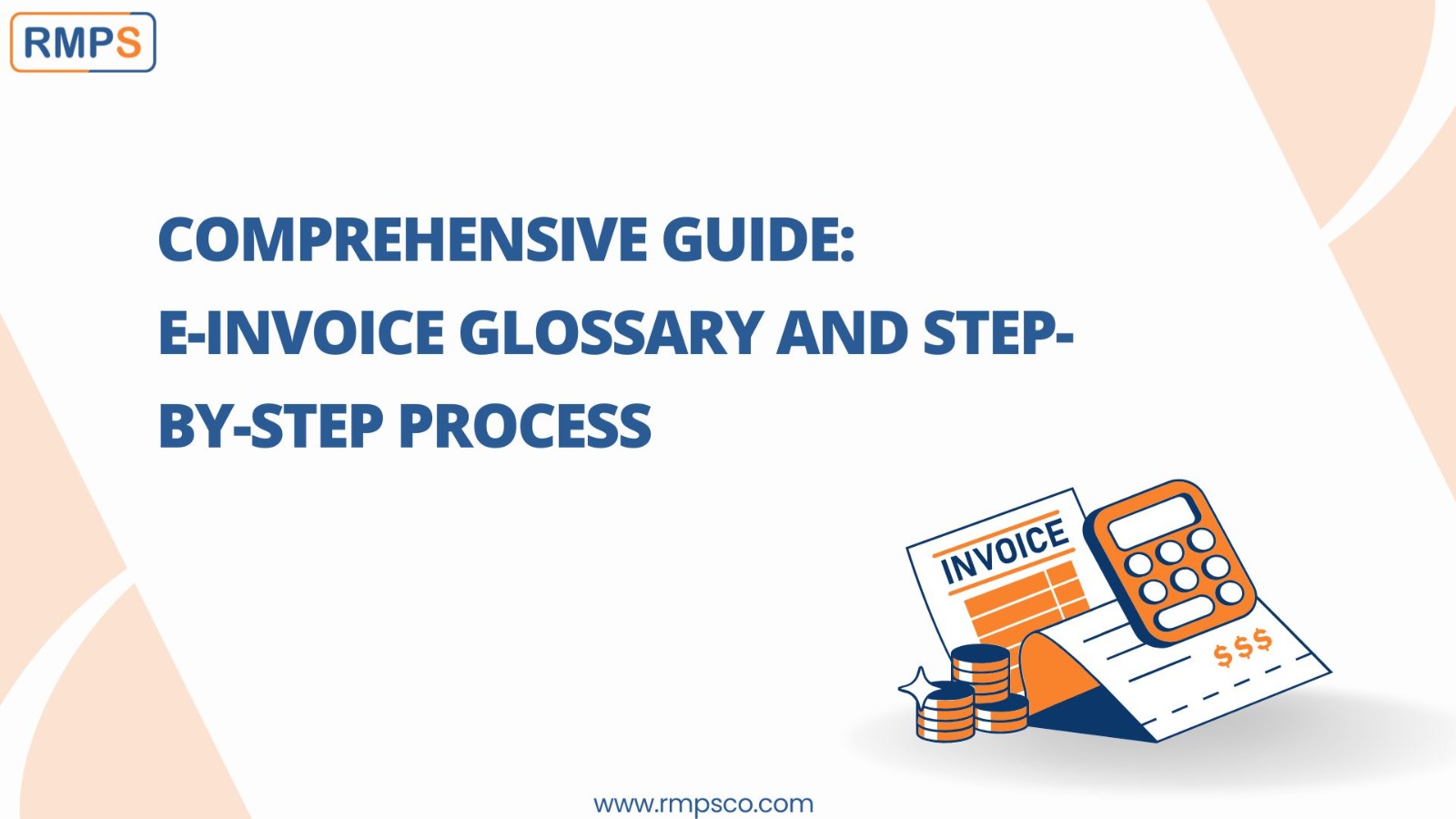
To support businesses in complying with GST regulations, the Goods and Services Tax Network (GSTN) has released two valuable resources: an E-Invoice Glossary and a Step-by-Step Guide. These documents are designed to make the e-invoicing process clear and easy to follow.
Let’s dive into a detailed overview and simplified explanation of e-invoicing.
What is E-Invoicing?
E-invoicing refers to the process of reporting specific GST documents to a government-approved platform, known as the Invoice Registration Portal (IRP). Once reported, the portal generates a unique Invoice Reference Number (IRN) and provides a digitally signed e-invoice with a QR code.
Contrary to popular belief, e-invoicing does not mean invoices are created by the government. Businesses will continue to generate invoices through their existing accounting or ERP systems. The IRP acts as a platform for validation and reference generation.
Who Needs E-Invoicing?
E-invoicing applies to taxpayers whose annual aggregate turnover exceeds ₹5 crores (in any financial year since FY 2017-18). However, certain entities, such as government bodies and specific notified persons, are exempt. Taxpayers should consult the latest GST notifications for precise details.
Understanding Key Terms in E-Invoicing
The E-Invoice Glossary provides definitions for essential terms. Here are a few highlights:
- Invoice Registration Portal (IRP): Platforms where taxpayers upload invoices for validation and IRN generation.
- Invoice Reference Number (IRN): A unique identifier for each reported invoice, based on specific document details.
- JSON Format: The standard format used for uploading invoices to the IRP.
- Master Codes: Predefined codes (such as HSN and currency codes) used to ensure consistency.
- Auto-Population: The process by which validated e-invoice data automatically populates the GSTR-1 return.
For a complete list, explore the E-Invoice Glossary.
Step-by-Step Process for E-Invoicing
Implementing e-invoicing involves the following steps:
1. Enablement
- Confirm eligibility for e-invoicing on the GST e-invoice portal.
- If not enabled automatically, self-enable via the same portal.
2. Registration on IRP
The registration process includes a one-time OTP validation of your registered mobile number and email address.
3. Generate and Report Invoices
- Create invoices in your accounting or ERP system using the standard INV-01 schema (in JSON format).
- Upload the data to the IRP through APIs, web portals, or mobile applications.
4. Validation and IRN Generation
- The IRP validates the uploaded invoice and generates an IRN along with a digitally signed e-invoice containing a QR code.
- This e-invoice is shared with the GST system for auto-populating your GSTR-1 return.
5. Issue Valid E-Invoice
- Provide the validated e-invoice to your buyer. Remember, an invoice for B2B transactions is valid only if it contains an IRN.
6. Verification
- Use the GSTN QR Code Verifier App or the IRN search tool to confirm invoice authenticity.
Benefits of Using E-Invoicing Resources
E-Invoice Glossary
- Simplifies complex terminology for better understanding.
- Helps new users quickly familiarize themselves with key concepts.
Step-by-Step Guide
- Offers a clear roadmap for successful implementation.
- Reduces errors by detailing the process and compliance requirements.
📥 Download the resources now:
Useful Links and Tools
To streamline the e-invoicing process, take advantage of the following resources:
- Master Portal: Access the GST e-invoice portal for FAQs, schema downloads, and tools.
- Verification App: Download the GSTN QR Code Verifier App for real-time verification of e-invoices.
- IRP Portals: Use any of the six IRPs to generate and validate your e-invoices.
Final Thoughts
E-invoicing is an essential compliance step for eligible businesses under GST. By following the steps outlined in this guide and leveraging the provided resources, you can ensure seamless implementation. Stay compliant, avoid penalties, and focus on growing your business.
LinkedIn Link : RMPS Profile
This article is only a knowledge-sharing initiative and is based on the Relevant Provisions as applicable and as per the information existing at the time of the preparation. In no event, RMPS & Co. or the Author or any other persons be liable for any direct and indirect result from this Article or any inadvertent omission of the provisions, update, etc if any.
Published on: November 30, 2024
